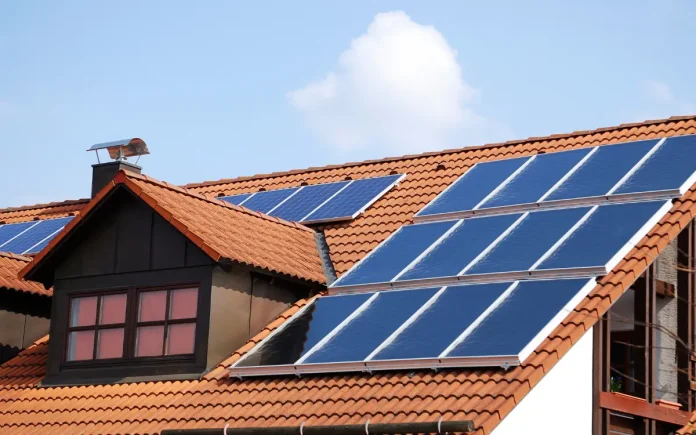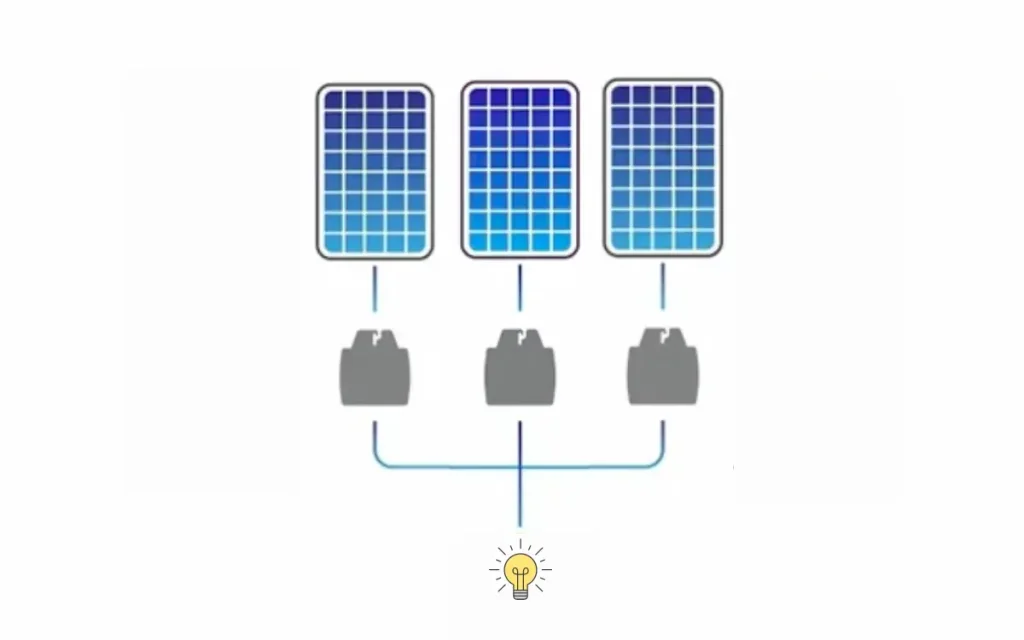
The detractors of solar always point out that it’s inconsistent due to ever-changing weather. What they always failed to mention, though, is that when the sun shines, it’s cheaper than fossil fuels.
It will continue to get cheaper as we improve our panel technology and make it more efficient. That includes key components beyond the panels specifically, such as the power inverters in our home. One of the most fascinating new types of panels is with micro inverters built-in.
What are they, what benefits do they provide, and what trends are they showing across the globe for solar technology? Let’s take a brief look.
What Are Solar Panels With Micro Inverters?
Regardless of which solar panel options you choose, you can’t use the energy it produces just like that. Solar energy enters the wires as DC, or direct current. The vast majority of homes are wired for AC, or alternating current.
In order to use the power, your home has an inverter installed – you can find out everything you need to know about solar inverters here. This inverter functions almost like the transformer station near your home that steps down electricity to the right voltage. It is simply converting one current type to another so you don’t overload your breakers, fry your appliances, and so on.
Traditionally, the inverter makes up part of your breaker switch box. It’s responsible not just for converting DC to AC, but managing the flow of electricity with the grid. When you sell back excess energy, it’s the inverter that is sending it back.
Now, newer solar panel technology is putting miniature inverters on each panel. Simply put, the panel does its own DC/AC conversion and passes on ready-to-use AC. Then you have some other system for regulating the input and selling back excess.
Why Micro Inverters?
So what’s the point of having micro inverters on the individual panels? Well, there are quite a few advantages.

Cost Savings
A micro inverter is, well, micro. It’s a small component that’s cheap to manufacture and add to the existing panel design. Instead of adding a bulky inverter that costs several hundred dollars, you just buy the panels with the micro inverters ready to go.
Better System Design
The design of your solar panels depends on the placement of the inverter. You have to limit the distance to reduce wastage in the conversion and prevent overloading the wires. With them, a system can be rearranged in any way you’d like.
Better Efficiency
The individual performance of each panel is a key factor in efficient energy production. With them, you can carefully monitor this production. If one panel is under performing, then you know it needs to be cleaned, fixed, or repositioned.
Learn Why Should You Choose Luxury Staircase Railings.
Latest Trends with Micro Inverters
They are in their infancy, given that the vast majority of panels don’t have them. This evolving technology will continue to get better as we find new ways to maximize efficiency. Let’s examine current trends in the news, and extrapolations about the future of this tech.
Energy Storage System Integration
They are great since you can sell energy back to the grid, but some would prefer to keep that excess for themselves. Battery energy storage systems are already a solution. Further integration with micro inverters could be a huge step forward.
So, instead of a traditional battery array located elsewhere in the home, the panels themselves might store energy. Then, they intelligently disburse it during the night according to your needs. This might involve the use of super capacitors over lithium ions that have better long-term storage efficiency.
Smart Micro Inverter Networks
Everything is getting smarter these days, including and especially micro inverters. After all, this is a network of small inverters cooperating together to supply your home. Giving them interconnectivity and algorithms could massively overhaul their efficiency and functionality.
Now, we are seeing a trend where people’s smart homes are incorporating micro inverter networks, too. You can use your phone to see how your system is performing. This will be a key diagnostic tool should you need to call in a professional to fix it.
North America Dominates Micro Inverters
North America, particularly the US, may be a bit slow to adopt green energy compared to other developed nations. But one thing where they are doing quite well is in solar panels.
This will likely lead to North America having the lion’s share of micro-inverter installations in the regional market. This widespread adoption is great, but not just because people get access to the technology. More importantly, it will drive up demand and reduce production costs.
As a result, panel options with micro inverters will get cheaper and more accessible. Efficiency and installation savings may help tip those who were on the fence before that point.
Asia Pacific Follows
It’s no secret that China is driving hard with the solar revolution. They already have some of the largest farms in the world and some of the largest production plants for panels. This fervor is driving adoption in the surrounding region, especially as it pushes prices down.
We are likely going to see an explosion in Southeast Asia and India of solar panel adoptions. Micro inverters will be key here. Low-income households will need the cheapest option available, and a micro-inverter certainly fits that bill.
Micro inverters will allow for installations with smaller footprints in apartment blocks and less-spacious homes. It will make it easier to integrate these panels into unstable grids. LCOL countries will still be able to make full use of them thanks to their smart features.
This will greatly help with the power needs of these regions, too. Blackouts and shortages of all kinds will become less of an issue.
Learn More About Micro Inverters
Solar panels with micro inverters are a huge improvement in solar technology. They replace traditional inverters and result in cheaper installations with greater efficiency. Trends in energy storage integration, smart technology, and widespread worldwide adoption prove this tech will soon become ubiquitous.
Follow our blog for more great articles.









